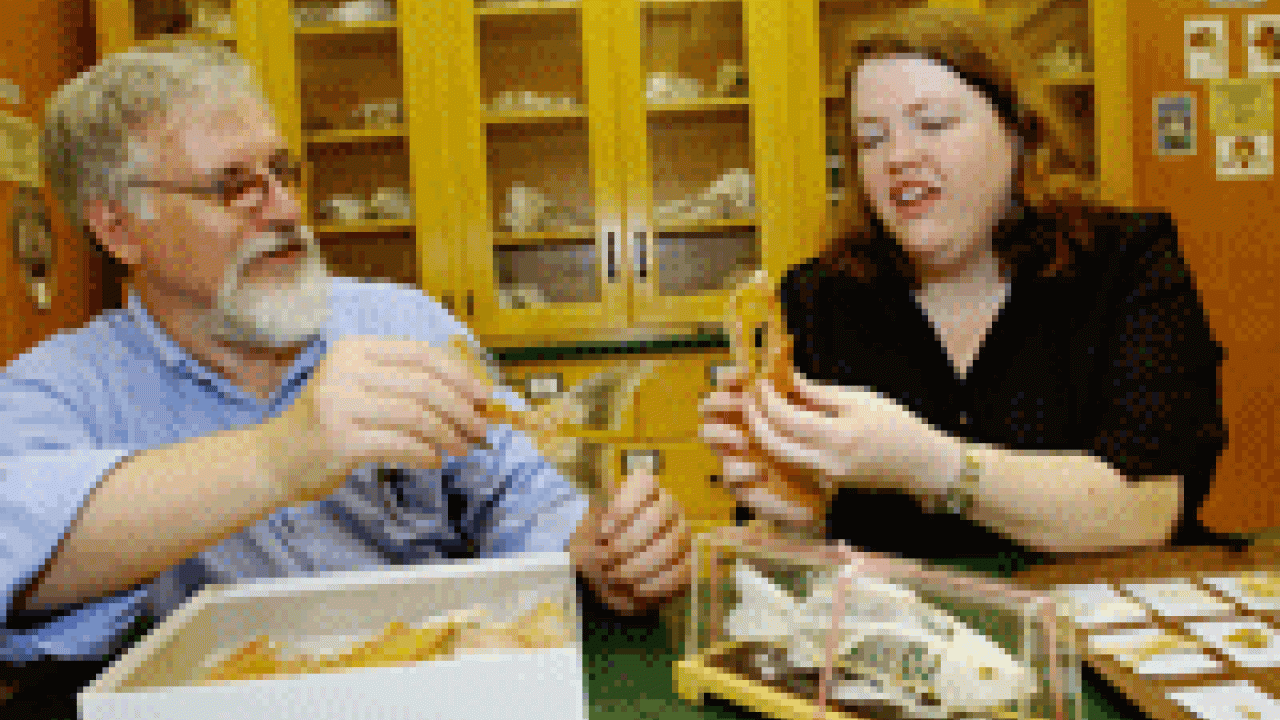With a shotgun close at hand to ward off curious polar bears, Chistyann Darwent spent the summer on an Alaskan peninsula sifting through garbage looking for bones.
These were not just any bones, but charred, gnawed, torn-apart bones from walruses, whales and seals -- all that remains from once-tasty Inupiat meals from thousands of years ago.
Darwent is UC Davis' first zooarchaeologist -- she studies what prehistoric people ate to find out how they lived.
For five short weeks each summer, she rummages through prehistoric garbage sites in Alaska, Canada and Greenland to understand long-term changes in hunting and subsistence patterns between 1,000 and 4,000 years ago.
The Arctic is one of the better places for peeking through that window into the past. Here, where cold temperatures prevent decay, researchers don't have to dig far to find well preserved specimens, especially along emerging shorelines.
"In the Arctic, the older sites are exposed on the surface and it's pretty much like putting things in a freezer," Darwent said.
A pile of rocks likely supported a tent site that collapsed two or three thousand years ago. And that garbage pit? It's layer upon layer of frozen refuse discarded by the Paleo-Eskimos who spent their summers hunting sea mammals on the Arctic shores.
Understanding ancient humanity
What has Darwent learned from such explorations and sites?
This summer, accompanied by husband archeologist John Darwent and graduate student Laura Smith, Darwent discovered two new house structures, complete with driftwood floors and ceilings from 3,000 years ago. They also found two harpoon points, something of great interest to John, who is finishing his doctoral dissertation from University of Missouri, Columbia, on stone tools. And they found more seal bones for Darwent.
"With the wooden floors, we learned the Inupiats were fairly advanced -- you wouldn't want to be living on gravel," Darwent says.
Through her previous work on the McDougall Sound Archaeological Research Project in Canada, Darwent also has contributed significantly to our understanding of how hunter-gatherers evolved.
"We think humans became more sedentary," she said. "Over time the people ended up focusing more and more on smaller animals -- Arctic foxes and hares, which had so much less meat -- instead of moving their camps to where the bigger game was."
This discovery adds more proof to UC Davis anthropologist Bob Bettinger's model of how hunter-gatherers tended to limit their migrations over time as their population increased and their culture developed.
Challenging assumptions
Darwent's work adds to the understanding not only of humans but animal populations. For instance, she most recently challenged the conventional assumption that Greenland's musk oxen were decimated by the fur trade of the 18th and 19th centuries.
Using maps of historical musk ox distributions developed through bone discoveries, Darwent has established that the shaggy, horned mammals were already dying off at least 3,000 or more years ago -- long before Europeans were toting guns and other weapons in the wilderness.
Such discoveries can help biologists who are working on wild animal conservation projects, Darwent said.
"We're able to help modern conservation biologists look beyond the last few hundred years," she explains.
Darwent recently received a $260,000 grant from the National Science Foundation to conduct a two-year survey of archeological remains in northwestern Greenland, including those of American explorer Robert Peary's expedition to the North Pole.
